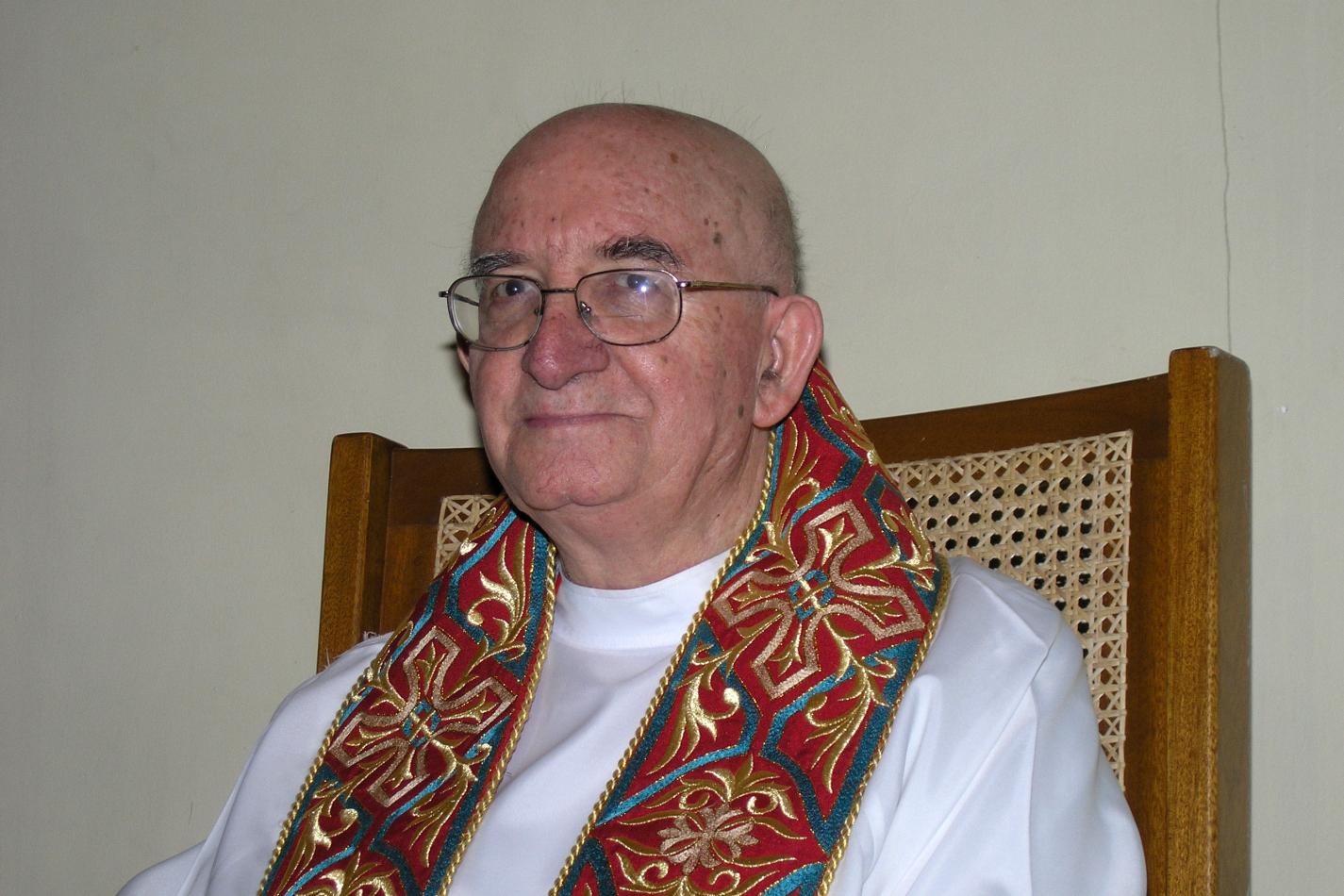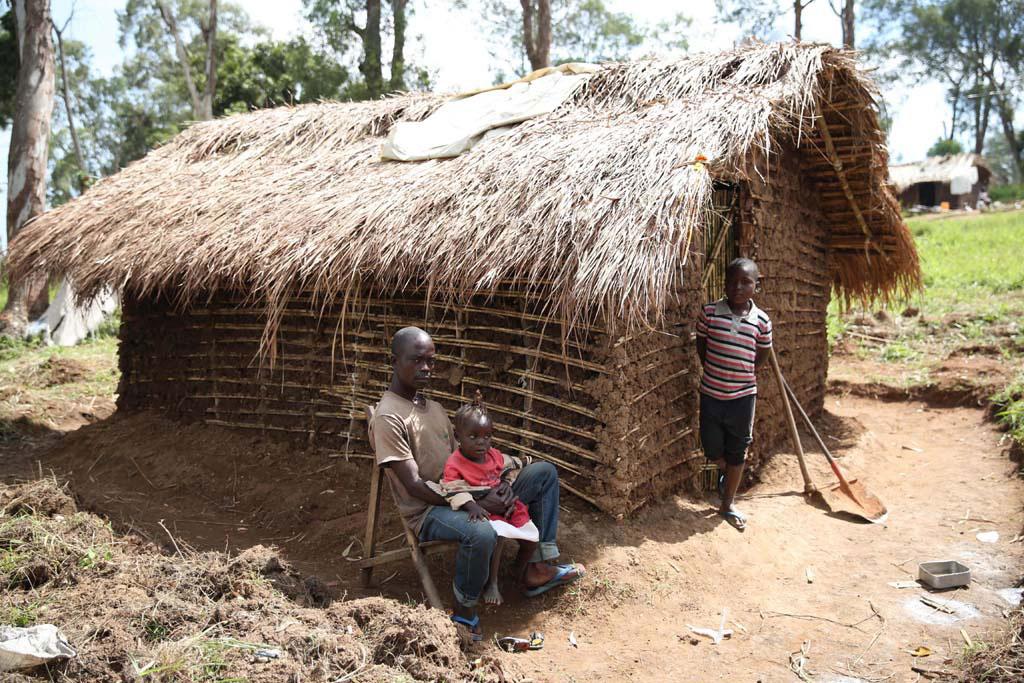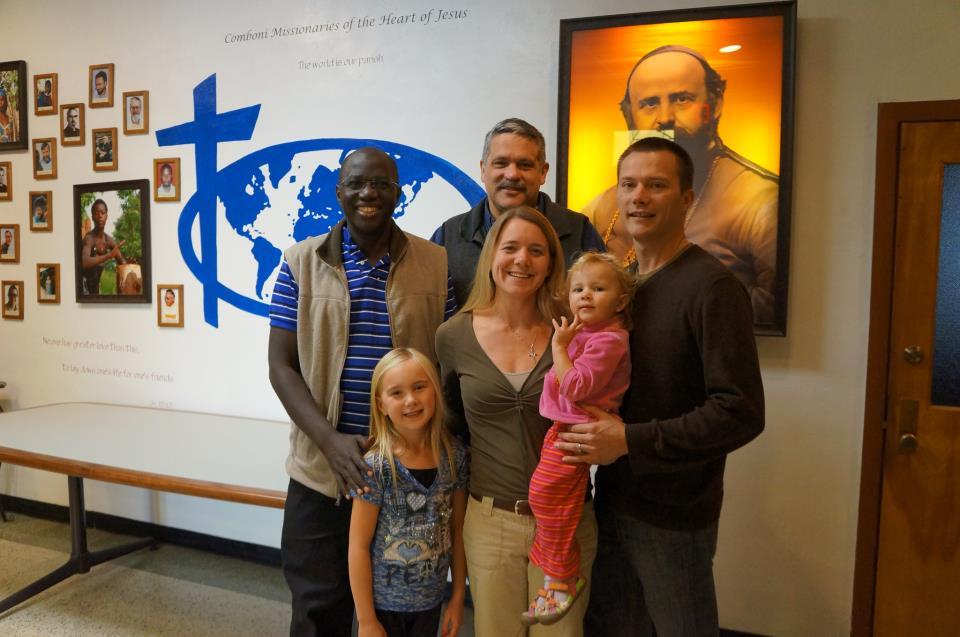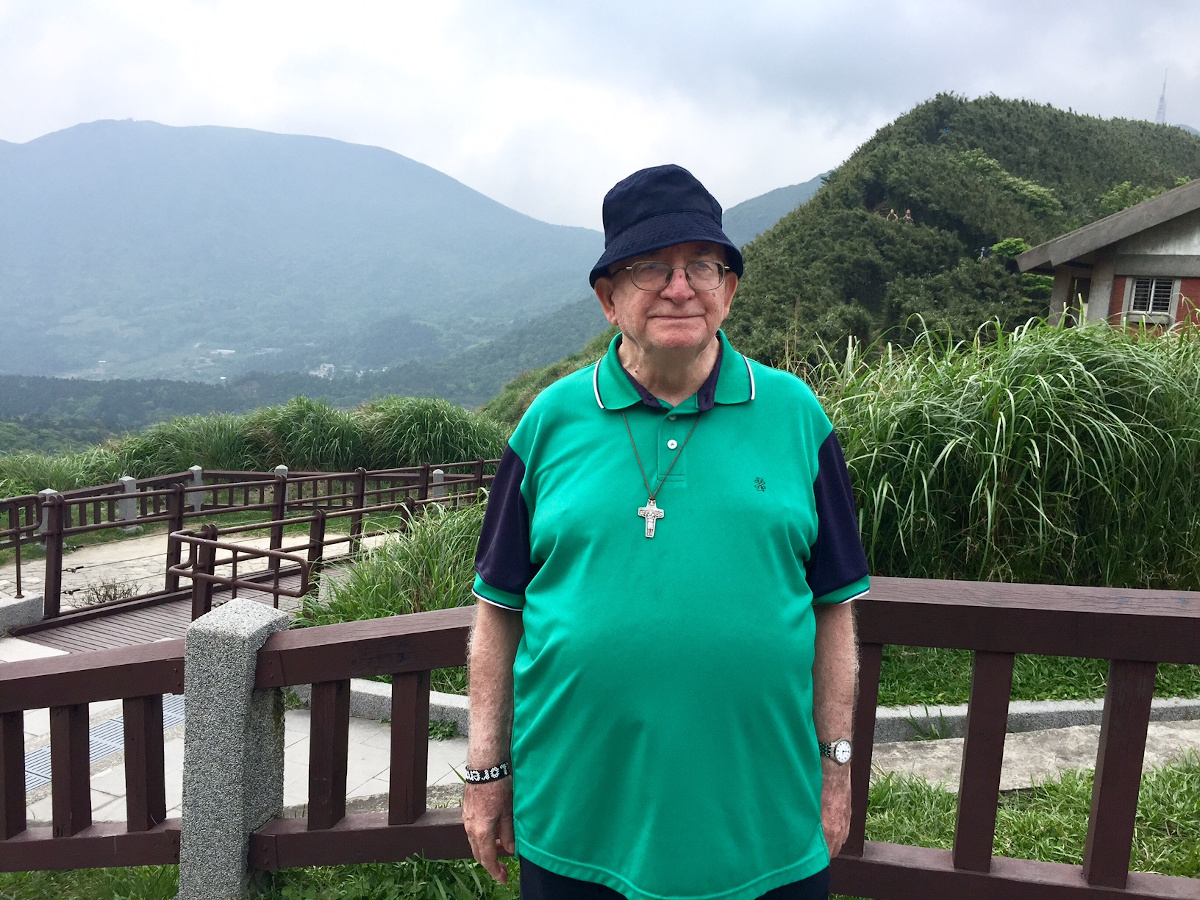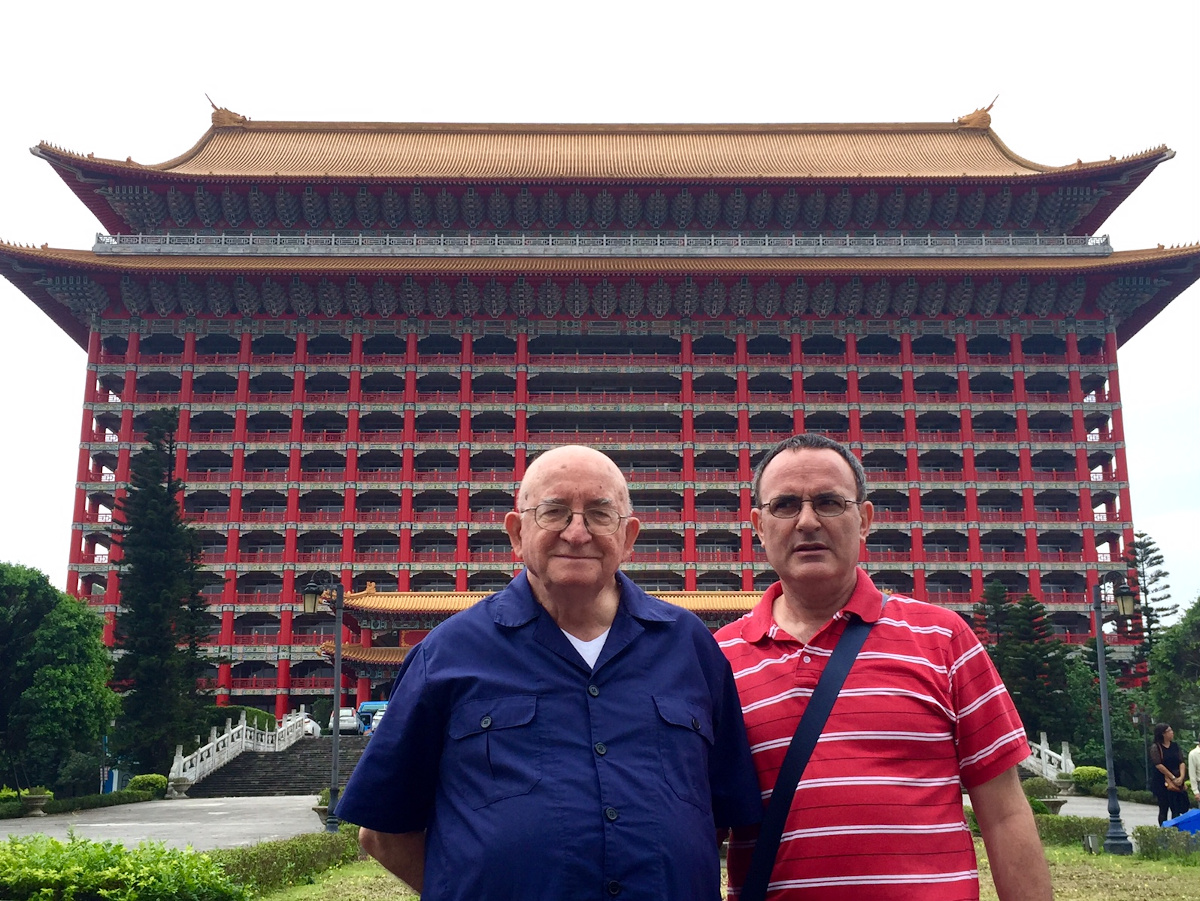Daniele Comboni
Missionari Comboniani
Area istituzionale
Altri link
Newsletter
Monday, January 31, 2022
Fr. Renzo Carraro, a Comboni missionary working in Manila (Philippines), collected in a few thematic booklets a selection of several reflections and some of his articles published in the Comboni missionary magazine World Mission. “Now – writes Fr. Renzo – I make available these booklets, which I consider not devoid of interest, to those who are interested. They are agile, not too long and ready to be enjoyed at leisure.” We publish below the index of the 16 booklets that you can find in attachment.
Index of the 16 booklets
Introduction
1. The Book of Job is the literary masterpiece of the wisdom movement. It is perhaps the most profound and original book of the whole Old Testament. Within the Dialogue in it, there are many reminiscences of the hymns and lamentations of the Psalms. The author is a Jew, but we know nothing about him, not even the name.
2. The Prologue and the Epilogue are in prose and probably are older in time of the poetry of the Dialogues which constitutes the bulk of the book and its originality.
3. Job is not a Jew: the character is an upright person who comes from a tradition attached to the land of Edom, on the border with Arabia, a region re-known for its wise men. He is mentioned in Ezekiel 14:14,20 together with other two wise men: Noah and Danel.
4. STRUCTURE
Prologue 1-2
Dialogue with the 3 friends 3-31
3 Introductory speech by Job
4-14 First Round
15-21 Second Round
22-27 Third Round
28 Poem in praise of wisdom
29-31 Job’s Final Speech
32-37 Elihu’s Four Speeches
38-39 Yahweh’s Two Speeches, followed by Job’s submission
(40:1-5)
40-41 Yahweh’s Final Two Speeches and Job’s final submission
(42:1-6)
Epilogue: 42
5. There is no reason to affirm or to deny the historical existence of Job. The allusion to his patience in James 5:11 implies his historicity no more than the parable of the Good Samaritan demands a historical background.
6. The book offers no concrete evidence of its date. It seems very probable that the discussion of the problem of the book did not occur in Israel until the time of the Exile or afterwards; on this basis most scholars believe it was composed around the 5th century.
7. As the wisdom of man is demonstrated in the management of his life, so the wisdom of God is manifested in the management of the universe. The world is full of the mystery of God’s wisdom; in spite of its paradoxes, it doesn’t fall apart, it does not return to chaos. Of the world man, and one man in particular, are but a small part. Job must accept the world as it is and from this accept God as He is. This is not a speculative solution. The author does not offer Job’s experience as a way to understand evil, but as a way to live with it. The experience of Job is that one can put up with evil only when one experiences a theophany: an insight into the reality of God. Without this insight, the conclusion can be that there is no difference between good and evil, but life is an absurd, a nonsense. In front of evil human wisdom and human reason are bankrupt. The Book of Job ends with the conviction that only faith makes evil tolerable, faith which brings insight through the experience of God which is within reach of one who desires it (John McKenzie, S.J.)
02 – A Fresh Look at the Saints
Saint Joseph
SILENT PRESENCE
Saint Anthony of Padua (1195-1231)
GOD’S POWERFUL TONGUE
Saint Philip Neri (1515-1595)
FROM ROME WITH LOVE
Francis de Sales (1567-1622)
THE POWER OF KINDNESS
Saint Pio of Pietrelcina (1887-1968)
PADRE PIO SANTO
St. Teresa Benedicta of the Cross (Edith Stein 1891-1942)
HEALING OF MEMORIES
Saint Elizabeth of the Trinity (1880-1906)
GOD’S DWELLING PLACE
Saint John Mary Vianney (1786-1859)
THE UNWILLING DESERTER’S UNRELENTING WAR
NB: These profiles were published in WORLD MISSION magazine. They are reproduced here without modifications.
Father Vincent Lebbe (1877-1940)
THUNDER IN THE DISTANCE
Junípero Serra (1713-1784)
THE LAME GOSPEL RUNNER
Blessed Clement Vismara (1897-1988)
YOUNG AT HEART
Antonio Vieira (1608-1697)
BRIDGE BETWEEN TWO WORLDS
Father Vittorio Pastori (1926-1994)
A HOTELIER’S IMPOSSIBLE DREAM
Saint Isaac Jogues(1607-1646)
HOLY “REVENANT”
NB: These profiles were originally published in WORLD MISSION magazine. They are here given as they were, without change.
Brother Roger Shultz (1915-2005)
A SAINT OF OUR TIME
Chiara Lubich (1920-2008)
A LIFE FOR UNITY
Henri-Pierre Grouès (The Abbé Pierre 1912-2002)
FAREWELL, ABBĖ PIERRE, PROPHET OF WEAKNESS
Saint John of God (1495-1550)
THE IMPULSIVE LOVER
Saint Aloysius Guanella (1842-1915)
NOAH’S ARK
Fr. Luigi Giussani (1922-2005)
HUNGRY FOR BEAUTY
Love in the afternoon
(Leonard Cheshire and Sue Ryder)
The story of an unusual couple
(Piero e Lucille Corti)
The great friendship
(Jaques and Raissa Maritain)
Unending Love
(Frank and Elisabeth Longford)
The Power of Two
(Blessed Louis and Mary Beltrame-Quattrocchi)
Paradise Family
(Blessed Louis and Zelie Martin)
NB. These articles were published in WORLD MISSION magazine. They are gathered here as they were, without any change.
Pope John XXIII (1881-1963) and John Paul II(1920-2005)
TWO SAINTS WHO EMBRACED THE WORLD
Cardinal Leo Joseph Suenens (1904-1996)
FROM REFORM TO RENEWAL
Bishop Samuel Ruiz García (1925-2011)
A CHAMPION OF THE INDIGENOUS PEOPLE
Archbishop Henry Karlen (1922-2012)
IN THE NAME OF THE LORD
Cardinal John Henry Newman (1801-1890)
HEART TO HEART
Cardinal Francis Xavier Nguyen Van Thuan (1928-2002)
THE CROSS IN A BAR OF SOAP
07 – Inside Comboni’s Writings
A PRICELESS TREASURE
The collection of letters written by Saint Daniel Comboni in his lifetime constitutes a unique opening into his heroic missionary heart and single-minded commitment to Africa.
LETTERS FROM A JOURNEY
In 1857 young Comboni set out for the first time for Africa. Here is a sample of the long letters to his parents which he wrote during that journey.
THE FRIENDSHIP OF TWO GIFTED YOUTHS
Daniel Comboni was 34 and in the prime of his life and Blessed Marie Deluil-Martiny only 24. The Sacred Heart of Jesus became their “center of communication”.
THE VISION OF A MAN IN LOVE
In 1864, while praying at the tomb of Saint Peter in Rome, Daniel Comboni conceived the “Plan for the Regeneration of Africa”, a genial intuition which contributed to his life-long dream coming true.
WOMEN OF THE GOSPEL
Protagonists of that heroic time of Mission together with Bishop Comboni are the women religious. Of this he was a conscious and happy witness and promoter.
THE PROFILE OF A MISSIONARY
Bishop Comboni’s words of appreciation for one of his missionaries show us how the Saint was boosting the morale of his group which was so diverse for formation, age and nationality.
A LOVE AFFAIR WITH THE NUBA PEOPLE
The Nuba people of the Sudan was the object of Comboni’ dreams as a missionary to Africa. Only later in life he managed to visit them and establish missions among them.
THE LAST SAFARI
Three months before dying, Comboni succeeded in visiting the green hills of his beloved Nuba people. The journey filled him with joy and yet will contribute to take him to his grave before time.
STANDING UP FOR THE OPPRESSED
Bishop Comboni was in agony over one of his spiritual daughters unjustly accused. The way he stood by her shows his extraordinary, heroic courage, forgetful of self.
COMBONI AND HIS FATHER
The love of Bishop Comboni for his father, also his only family member, is witnessed by the many, long and tender letters he kept writing to him throughout his life.
COMBONI AND MANY CROSSED
Throughout his life Saint Daniel Comboni experienced many sufferings of all kinds. He came to the conviction that the works of God are born at the foot of the Cross.
THE LAST LETTER
Bishop Comboni is dying prematurely in Khartoum. The hand that has written thousands of letters is now tired. His last sentences are an act of trust in God.
08 – Jubilee of the Faith in the Philippines
THE BEGINNINGS: THE FASCINATION OF THE “LITTLE BOY”
March 16 1521: with Magellan, Christianity arrives in the Philippines. The first Mass at Limasawa. The conversion of Raji Humabon and wife and 800 indigenous members of his entourage. The queen receives the statue of the Santo Nino. April 27, battle of Mactan and death of Magellan by Datu Lapulapu. The Spaniards depart. The little Santo Nino is like the seed of faith….
THE PIONEERS (1): THE LEAVEN OF THE GOSPEL
The pioneers of the evangelization of the Philippines are 5 religious orders which arrived in different waves from 1565 to 1606: Agostinians, Franciscans, Jesuits, Dominicans and Recollects. August 1565 marks the arrival of the Agostinians led by Fr. Andres de Urdaneta and August 1577, the arrival of the Franciscans led by Pedro de Alfaro. The importance of the singular personality of Urdaneta, his discovery of the sea route for going back called “Tornaviaje”, his respect for the natives and their defense against the Spanish colonizers. The friars travelled everywhere, called the people together around the church buildings and plazas, promoted public works, gave origin to the modern cities, etc…
THE PIONEERS (2): A STORY OF INTELLIGENCE AND SACRIFICE
1581: the first Jesuits arrived in the Philippines from Nueva Espana (Mexico). In the same year, the first two Dominicans arrive, one of them destined to be the first bishop of Manila: Fr. Dominic Salazar, OP. Only in 1597 the first consistent group of Dominicans reach the Philippines (15). In August 1606, fourteen Augustinian Recollects arrive in Cebu and then proceed to Manila. In 1611 is the beginning of what would be UST by the Dominicans. Everywhere, the friars are responsible for the starting of schools, the importation of new technologies and new plants and vegetables from the new world like coffee, sweet potatoes, tomatoes, peanuts, etc.
THE FESTIVALS: RELIGION AND FLOKLORE
The acceptance of Christianity in its special Catholic format, is evident in the festivals which animate the popular response as an invitation to joy and celebration. Possibly the most famous is the Sinulog of Cebu in honor of the Santo Nino. For the same reason is the Ati-Atihan of Calibu and the Dinagyang of Iloilo. Remarkable also the festival of Moriones in Marinduque during the Holy Week and that of Giant Lantern of San Fernando, Pampanga on the occasion of Christmas.
UNIVERSITY EDUCATION: THE MOST DISTINGUISHED LEGACY
In 2011 there was the grand celebration of the 400 years of the foundation of the University of Santo Tomas (UST) which started in 1611, the first university of Asia in absolute. The founder is the third archbishop of Manila, friar Miguel de Benavides. The Jesuit are responsible for Ateneo de Manila, which possibly the most distinguished for quality of learning. In these universities and in others which followed, most of the ruling class of the Philippines has studied and these educational institutions have been and are part of the life of the Philippines as a nation.
MARIAN DEVOTION: SALAMAT, MAMA MARY
The love of the Filipino people for the Blessed Virgin Mary is well known and gives origin to devotional practices like the “Simbang Gabi” and the “Flores de Mayo”. But the most evident feature is the existence of the Marian shrines and their role in the history and the life of the nation. The story of the Naval the Manila (the image, the feast, the procession…) is exemplary. To it we can add Managwa, Penafrancia, Antipolo…
THE “FIESTAS” OF THE PATRON SAINT: COMMON JOY
The life of the Filipino villages and parishes is built around the yearly celebration of the Patron Saint: the “Fiesta”. We can take as example the fiesta of Saint Gregory the Great in Majayjay, Laguna, a very historical place with a very ancient church. The committee is called “SaGreMa”. The “hermana mayor”, the coming of the Bishop, the solemn Mass, the procession with the images of the Saint and of all the other Saints, the cooking, the hospitality, the coming home of the overseas workers for the occasion….
THE TRANSLATION OF THE BLACK NAZARENE AND THE CRUCIFIXIONS: TOUGH LOVE
Popular devotion in the Philippines presents some features that demand bodily suffering that can reach an extreme extent. The Simbang Gabi or Night Worship, the very original and traditional Christmas Novena, already requires the sacrifice of very early rising for nine days, but it is in other devotions that the personal abnegation can reach the extent of torture and bloodletting. We are referring to the yearly Translation of the Black Nazarene of Quiapo in Manila and the crucifixions in Pampanga and the flagellations…
HERMANO PULE AND THE GOMBURZA: HOLY REBELLIONS
The acceptance of the evangelizers among the people, mainly friars of different orders, who were often demanding and severe disciplinarians, is manifested by the fact that we have no record of popular lynching of Church personnel in history. The very violent rebellions that broke out around the figure of Hermano Pule (Apolinario de la Cruz) in November 1841 and around the three secular clergy Fr. Gomez, Fr. Burgos and Fr. Zamora in 1872 were motivated by a strong, legitimate demand of equal treatment and not by insubordination. The savage reaction of the Spanish authorities created martyrs and prepared the way for independence.
JOSE’ RIZAL AND NICK JOAQUIN: CHRISTIANITY AND THE FILIPINO IDENTITY
The fact that Christianity arrived and developed together with the colonial domination of the Spaniards has constituted a problem for the identity of the Filipino people. Not everybody is able to make the distinction between the two. And yet the assimilation of Christianity, in the form of Catholicism, is so evident in the life and culture of the Filipino people that it is wisdom to accept the historical circumstances and the pervasive Catholic culture. This is the legacy of the most famous sons of the Philippines: the national hero Jose’ Rizal and a contemporary outstanding writer and poet Nick Joaquin have embodied this wisdom.
THE WITNESS OF THE OFWs: MISSION TO THE WORLD
The ten million Filipinos abroad carry around their Catholic faith and their beloved way of praying and celebrating wherever they are. In this way, the communities of Filipinos abroad are reviving the Catholic local churches where they worship. Point of departure to prove their spontaneous, non-official mission to the world is the large number of Filipinos in Rome. For the 2019 Simbang Gabi, they even managed to recruit pope Francis to preside the Mass of the first day of the Novena… What is happening in Rome is true everywhere they are...
Blessed Pino Puglisi (1937-1993)
IN THE LINE OF FIRE
Fr. Fausto Tentorio (1952-2011)
MURDER IN PARADISE
Fr. Titus Brandsma (1881-1942)
JOURNALIST AND MARTYR
Fr. Rhoel Gallardo (1965-2000)
A NEW FILIPINO SAINT
Shahbaz Bhatti (1968-2011)
AT THE FEET OF JESUS
Vittorio Bachelet (1926-1980)
SEVEN BULLETS FOR THE PROFESSOR
Pedro Arrupe (1907-1991)
A MAN-FOR-OTHERS
Pierre Theilhard de Chardin (1881-1955)
MYSTIC FIRE
Raimon Panikkar (1918-2011)
A MODEL OF DIALOGUE
Fr. Daniel Berrigan, S.J. (1921-2016)
PEACE WARRIOR
James Reuter S.J. (1916-2012)
THE GREAT COMMUNICATOR
Fr. Zeno Saltini (1900-1981)
THE MOST OBEDIENT REBEL
Fr. Carlo Gnocchi (1902-1956)
ANGEL OF THE WAR VICTIMS
11 – Lay Movements in the Catholic Church
01. A New Pentecost
02. Focolare
03. Couples for Christ
04. New-Catecumenal Way
05. Community of Saint Egidio
06. Catholic Charismatic Movement
07. El Shaddai
08. Communion and Liberation
09. L’Arche and “Faith & Light”
10. Worldwide marriage Encounter
11. Cursillos de Cristiandad
12. Legion of Mary
13. Opus Dei
14. The Lord’s Flock
15. Third Order Franciscans
16. Pope John XXIII Community Association
17. Light of Jesus’ Ministries (Bo Sanchez)
18. Foyers de Charité (Charity Homes)
19. Salesian Cooperators
20. Militia of the Immaculate
21. Regnum Christi
22. Emmanuel Community
Raul Follereau (1903-1977)
“GIVE ME THE PRICE OF TWO BOMBERS”
Gino Filippini (1939-2008)
THANK YOU, GINO!
Donald Woods (1933-2001)
CRY FREEDOM
Dr. Francis Canova (1908-1998)
PIONEER AND FOUNDER
Dr. Edric Baker (1941-2015)
THE DOCTOR OF THE POOR
Jeremias U. Montemayor (1923-2002)
DEAN JERRY
Blessed Joseph Toniolo (1845-1918)
PIONEER OF CATHOLIC SOCIAL DOCTRINE
13 – Sisters Exemplary figures
NB: These profiles were originally published in WORLD MISSION magazine.
Sister Hellen Prejean
THE CIRCLE OF LIGHT
Sr. Mary MacKillop (1842-1909)
A PIONEER AND A SAINT
Sr. Anne Montgomery (1926-2012)
A DOER OF THE WORD
Sr. Dorothy Stang (1931-2005)
THE ANGEL OF THE AMAZON
Sister Emmanuelle (1908-2008)
THE NAUGHTY NUN
Lady Egeria (IV Century)
THE EYES OF EGERIA
Gilbert Keith Chesterton
MADLY IN LOVE WITH THE CHURCH
Antoni Gaudi
A FORCE OF NATURE
Léopold Sédar Sengor
BRIDGE BETWEEN CULTURES
José Maria Velez Zaragoza
A LEGACY CAST IN STONE
Nick Joaquin
WORDS CRAFTSMAN
John Bradburne
POET, MYSTIC, MARTYR
Wangary Maathai (1940-2011)
THE HUMMINGBIRD REVOLUTION
Annalena Tonelli (1943-2003)
“I AM A NOBODY”
Dorothy Day (1897-1980)
THE GRAND LADY OF PACIFISM
Lady Zilda Arns (1934-2010)
JUST A LITTLE SUGAR AND A PINCH OF SALT
June Keithley-Castro (1947-2013)
THE VOICE OF EDSA REVOLUTION
Maria Bonino (1953-2005)
THE DREAM OF A LIFETIME
PS: These articles were originally published in WORLD MISSION magazine. They are gathered here as they were, without change.
Blessed Daudi Okelo and Jildo Irwa (+1918)
SACRIFICE AT DAWN
Kateri Tekakwitha (1656-1680)
TORTURE OF LOVE
Pier Giorgio Frassati (1901-1925) and Vinicio Dalla Vecchia (1924-1954)
YOUNG HOLINESS
Pedro Calungsod (1654-1672)
HEROISM AT DAWN
Blessed Cyprian Michael Iwene Tansi (1903-1964)
THE ROOT OF THE HUGE TREE
Fr. José Gabriel del Rosario Brochero (1840-1914)
THE “COW-BOY” PRIEST
Luis Ruiz Suarez S.J. (1913-2011)
THE ANGEL OF MACAU
Elpidio “Jojo” dela Victoria
A LIFE FOR GOD AND THE VISAYAN SEA
Fr. Renzo Carraro, MCCJ
01_THE BOOK OF JOB
02_A Fresh Look at the Saints
03_Exemplary Missionaries
04_Founders
05_Holy Couples
06_Holy Pastors
07_Inside Comboni's Writings
08_Jubilee of the Faith in the Philippines
09_Modern Martyrs
10_Modern Prophets
11_Movements in the Catholic Church
12_Outstanding Lay Men
13_Sisters Exemplary figures
14_Six Christian Artists
15_Women's Power
16_Young Saints and others

